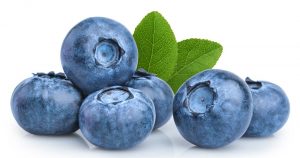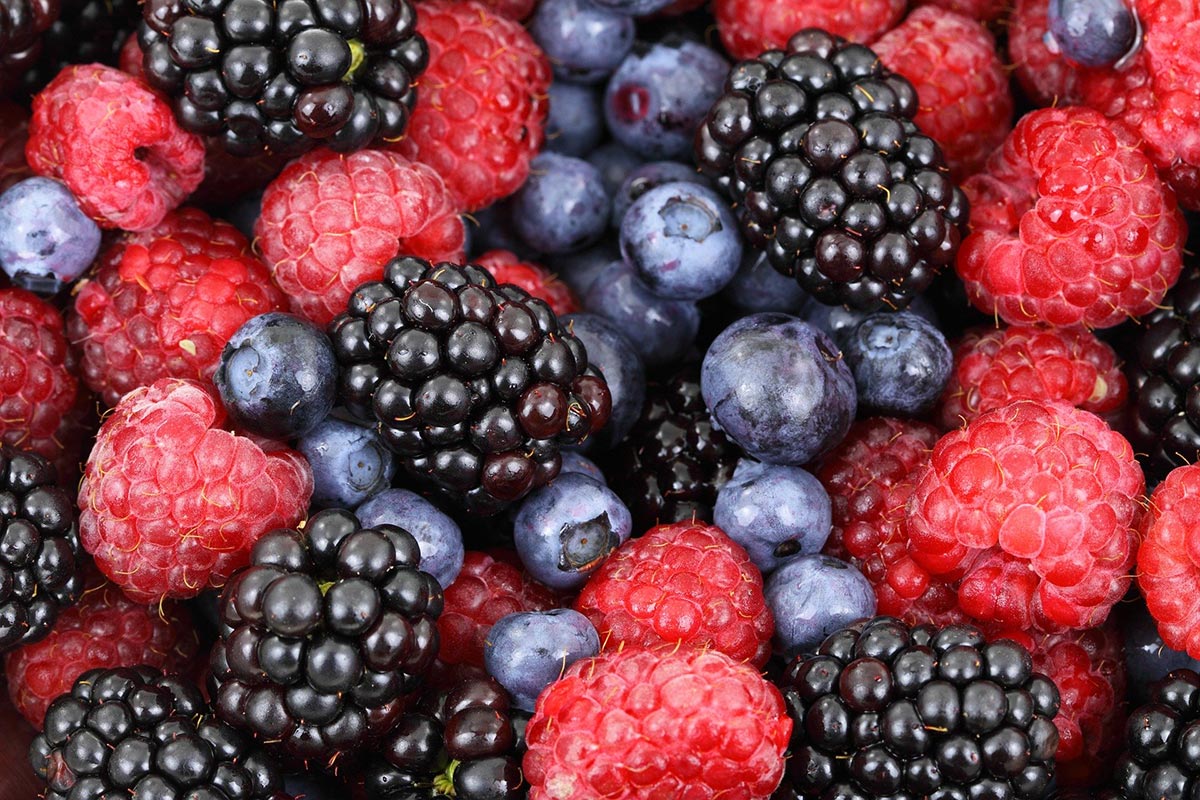
Eat Well! Summer 2018
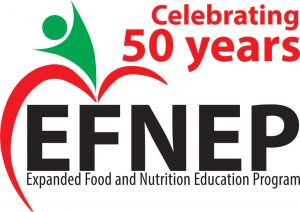
A Newsletter for Healthy Eating!
Print a copy of Eat Well! Summer 2018 (PDF)
Inside this Issue:
- Featured Article: Cost of Convenience: Fruit
- Food Bites: How to Freeze Summer Fruits
- Kid’s Korner: Berry and Spinach Smoothie
- Ask Eat Well: Karen Toohey, Community Education Assistant, Oxford County
- Food Safety Corner: Molds of Fruits and Vegetables
- Quick and Easy Eat Well Recipe: Wild Maine Blueberry Cobbler
 Looking for ways to save money on food?
Looking for ways to save money on food?
The EFNEP newsletter has always given you great ideas on how to save money on food. Now, these ideas are even easier to spot. Look for this picture in the EFNEP newsletter to find great tips to save money on food. SAVE MONEY.
Featured Article:
Cost of Convenience: Fruit
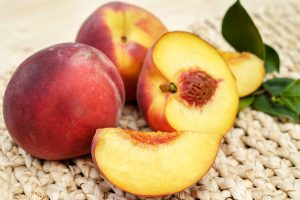 Fruits are considered to be nature’s convenience food. Many come in their own skin, and they make easy grab-and-go snack foods. According to My Plate and the current Dietary Guidelines for Americans recommendations, individuals ages 9 and up need 1½ to 2 cups of fruit per day. This can be achieved by preparing and eating fresh, frozen or canned fruits.
Fruits are considered to be nature’s convenience food. Many come in their own skin, and they make easy grab-and-go snack foods. According to My Plate and the current Dietary Guidelines for Americans recommendations, individuals ages 9 and up need 1½ to 2 cups of fruit per day. This can be achieved by preparing and eating fresh, frozen or canned fruits.
Buying fruits that are in season can help you save money on your food bill. Look for fruits that are in season in Maine this summer. Some examples are:
- Peaches
- Berries
- Melons
While the convenience of pre-cut and prepared fruit may seem like a good option, you will actually end up paying much more. Why pay for a package when some fruits come in their own packaging? Look at the comparison of cost between pre-cut and whole fruit in the table below.
Fruits can be very versatile. They can be used in many recipes. One example of this is applesauce. Applesauce is a great snack and can be used as a fat substitute in baked goods.
Buying fruit products in larger quantities rather than single-serve can also help you stretch your food dollar. Purchasing larger quantities and portioning them into single servings on your own can be very beneficial.
| Item | Whole | Pre-Sliced/Prepared | ||
|---|---|---|---|---|
| Price per pound | Price per pound | Price per pound | Price per pound | |
| Green Apples | $1.49 | $.09 | $3.42 | $.20 |
| Cantaloupe | $.99 | $.06 | $3.99 | $.25 |
| Grapes | $3.14 | $.20 | $4.99 | $.31 |
When buying fruits, it is important to know your options. Fruits can be purchased fresh, frozen or canned. Frozen and canned fruits are just as beneficial to your health as fresh fruits are. Often, canned fruits come in heavy syrup with added sugar. Take note of what your canned fruit is packaged in and choose those canned in 100% fruit juice. Frozen fruit can be great to keep on hand in the freezer for long periods of time. These fruits are frozen and packaged at peak ripeness, which allows the fruit to maintain its great taste.
| Applesauce Container Size | Total Cost | Cost/Serving |
|---|---|---|
| Jar | $2.59 | $.24 |
| Single-serve Cups (24 oz.) | $2.39 | $.40 |
| Squeeze Pouches (38.4 oz.) | $7.99 | $.67 |
Food Bites:
How to Freeze Summer Fruits
By Alyssa Adkins, Nutrition Education Professional
Summer fruit — think berries, peaches, and nectarines — are some of the easiest produce to preserve and store for later. You will enjoy having local summer fruit on hand during the long winter months to add to breakfast cereals, smoothies or snacks. Follow these easy steps to safely freeze fruit.
Thoroughly wash and prepare the fruit
Berries:
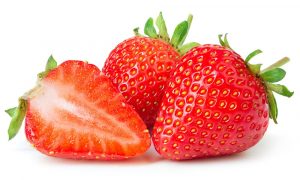 Start with clean hands and a clean work surface.
Start with clean hands and a clean work surface.- Sort through berries to remove any that are moldy or squished.
- Wash fruit thoroughly, then pat dry with a towel or spin in a salad spinner to remove excess water. This will prevent the fruit from clumping together in the freezer.
- Remove hulls from strawberries and remove pits from cherries. Stone Fruit:
- Start with clean hands and a clean work surface.
Stone fruit, such as peaches and nectarines, should have any brown spots removed.
- Wash the fruit thoroughly and dry well with a towel.
- Remove pits and cut the fruit into sixths.
Arrange and freeze the fruit
- Arrange berries or slices on a large baking sheet and freeze until solid. This method helps to make sure the fruit will not stick together during freezing.
Pack the fruit
- Once frozen, pack the fruit into freezer-grade containers and use them within 8-12 months.
- Use containers that are moisture-resistant and that will not crack when frozen. Good examples are freezer-grade plastic bags and rigid freezer containers or freezer jars. For more information about freezer-grade containers see the Ask Eat Well section in this newsletter.
- Be sure to label your containers with the content and date of freezing before storing them in your freezer.
Kid’s Korner:
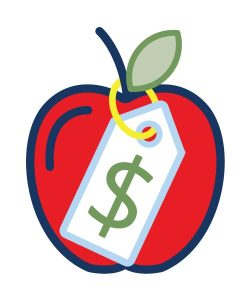 Berry and Spinach Smoothie
Berry and Spinach Smoothie
A Tasty and Healthy Treat for All Ages!
Ingredients
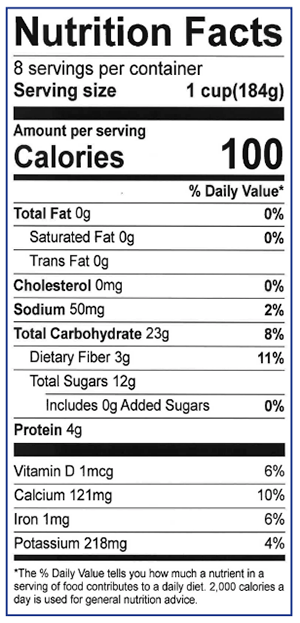 2 medium bananas
2 medium bananas- 2 containers (6 oz. each) nonfat vanilla yogurt
- 3 cups spinach, washed
- 1 package (16 oz.) frozen berries
- 1 cup skim milk
Directions
- Put bananas, yogurt, and spinach in a blender, blend until smooth
- Add berries to the blender, blend until smooth
- Add milk to the blender, blend until smooth
- Serve immediately or freeze in individual servings
Tips
- Add up to 1 cup more milk if the smoothie is too thick.
- Use half of each ingredient to make four servings if the recipe makes too much.
- This is a good recipe to use up over-ripe bananas.
Makes 8 servings
Serving Size: 1 cup
Cost per recipe: $6.87
Cost per serving: $.85
Ask EFNEP!
Karen Toohey, Community Education Assistant, Oxford County
 Karen Toohey has been a Community Education Assistant for the University of Maine Cooperative Extension in Oxford County since 1996. Over the years she has provided nutrition education to adults and children through group lessons and classroom settings. She has witnessed the upswing of interest in nutrition information and learning how to cook healthier meals. When not working, Karen enjoys spending time with her family.
Karen Toohey has been a Community Education Assistant for the University of Maine Cooperative Extension in Oxford County since 1996. Over the years she has provided nutrition education to adults and children through group lessons and classroom settings. She has witnessed the upswing of interest in nutrition information and learning how to cook healthier meals. When not working, Karen enjoys spending time with her family.
Q: I am trying to plan meals and make larger recipes so I can freeze leftovers for future meals. I have heard I have to use a “freezer-grade” container to freeze foods. What exactly does “freezer-grade” mean?
A: Freezer-grade containers can be rigid containers, bags or wraps.
Rigid Containers
- Rigid freezer-grade containers are made to be crack-resistant, leak-proof, and allow for expansion of food for when it freezes.
- Made of plastic or glass and are used to store all foods, but work best for soups, stews, and other liquid foods.
- Plastic rigid containers can be reused, and can be stacked on top of each other and can save space in your freezer. Rigid containers are not plastic containers like the ones yogurt or cottage cheese come in.
- Glass jars should be made for freezing and canning. Choose wide-mouth jars to make filling them easier.
- When filling both plastic and glass containers, make sure to leave some room at the top for the liquid to expand when frozen. Covers for rigid containers should fit tightly.
Bags or Wraps
- Plastic freezer bags are made specifically to be moisture resistant and are a heavier plastic than standard reclosable plastic bags.
- Freezer bags can be used for liquid foods as well.
- Freezer wraps include plastic freezer wrap, freezer paper, and heavyweight aluminum foil.
- Freezer wraps work best for foods with little or no liquid, and are good for foods that do not have a uniform shape.
Food Safety Corner
Molds on Fruits and Vegetables
By Kathy Savoie, Extension Educator
Molds are microscopic fungi that live on plant or animal matter. Some molds can cause allergic reactions and respiratory problems. A few molds, in the right conditions, can produce poisonous substances that can make you sick. Although you can see molds on the surface of foods, you cannot see the “root” threads of molds that have invaded the food deeply. Follow the chart below to know what to do when you find molds on fruits and vegetables.
| Food | What to Do? | Reason |
|---|---|---|
| Firm Fruits and Vegetables: (Such as cabbage, bell peppers and carrots) | OK to use after you cut off at least 1 inch around and below the mold spot. Keep the knife out of the mold itself so it will not cross-contaminate the produce. | Small mold spots can be cut off FIRM fruits and vegetables with low moisture content. It is difficult for molds to penetrate dense foods. |
| Soft Fruits and Vegetables: (Such as cucumbers, peaches, berries and tomatoes) | Discard | Soft fruits and vegetables with high moisture content can be contaminated below the surface. |
When in doubt, throw it out!
Adapted from: Molds on Food: Are They Dangerous?, Retrieved April 4, 2018, revised August 2013.
Quick and Easy Eat Well Recipe:
Wild Maine Blueberry Cobbler
Ingredients
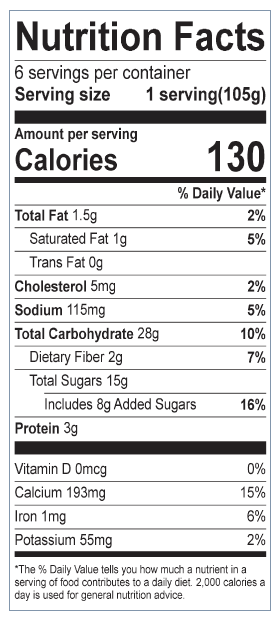 ⅔ cup flour
⅔ cup flour- ½ cup sugar
- 1 ½ teaspoons baking powder
- ¼ teaspoon salt ⅔ cup skim milk
- 2 teaspoons butter, melted
- 2 cups wild Maine blueberries, frozen or fresh
Directions
- Preheat the oven to 350° F
- In a medium bowl, combine the flour, sugar, baking powder, and salt. Stir in the milk and mix the batter until it is smooth
- Using the melted margarine, grease the inside of a 2-quart casserole dish. Pour in the batter and add the blueberries over the top.
- Bake the cobbler at 350° F for 30 minutes, or until lightly browned.
Makes 6 Servings
Serving Size: 1/6 recipe
Cost per Recipe: $2.80
Cost per Serving: $.47
The EFNEP newsletter is published two times a year for current, past, and future UMaine Extension Expanded Food and Nutrition Education Program participants. For more information on the EFNEP program, contact your UMaine Extension county office.
Managing Editor: Kate Yerxa, MS, RD
EFNEP Committee: Kathleen Savoie, MS, RD, Extension Educator; Kate Yerxa, MS, RD, Extension Educator; and Brenda Bracy, Community Education Assistant.
This material was funded by the National Institute for Food and Agriculture’s (NIFA) Expanded Food and Nutrition Education Program (EFNEP).
Information in this publication is provided purely for educational purposes. No responsibility is assumed for any problems associated with the use of products or services mentioned. No endorsement of products or companies is intended, nor is criticism of unnamed products or companies implied.
© 2019
The University of Maine is an EEO/AA employer, and does not discriminate on the grounds of race, color, religion, sex, sexual orientation, transgender status, gender expression, national origin, citizenship status, age, disability, genetic information or veteran’s status in employment, education, and all other programs and activities. The following person has been designated to handle inquiries regarding non-discrimination policies: Director of Equal Opportunity, 101 North Stevens Hall, University of Maine, Orono, ME 04469-5754, 207.581.1226, TTY 711 (Maine Relay System).

